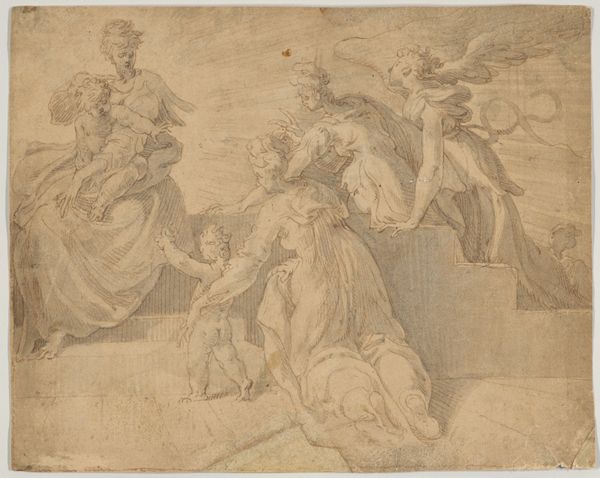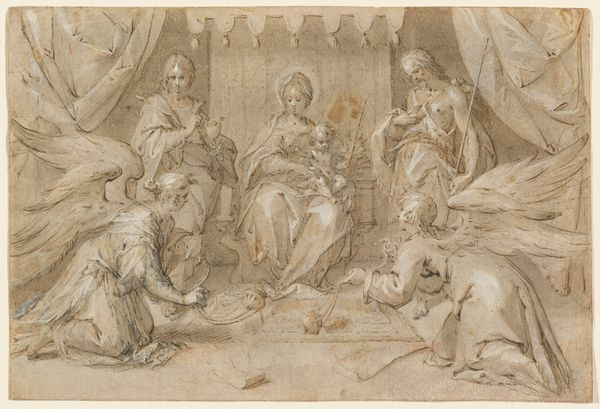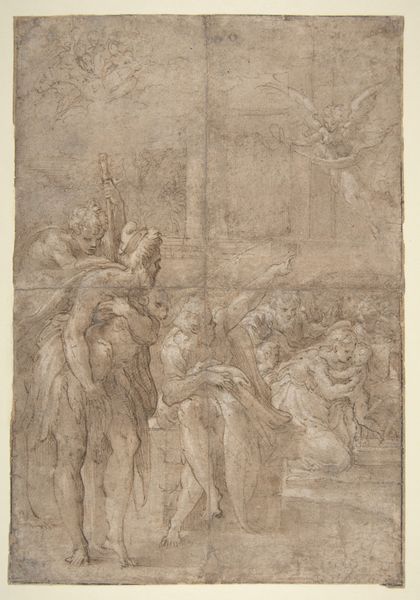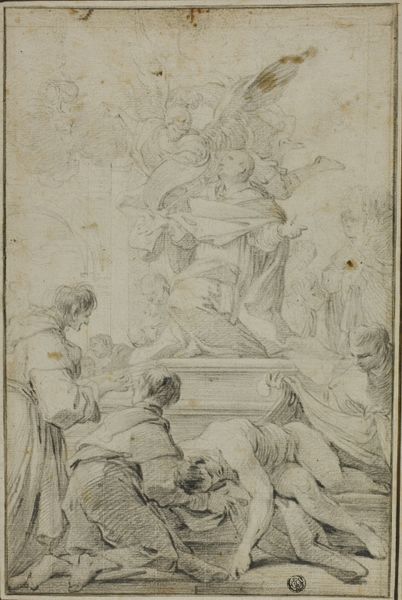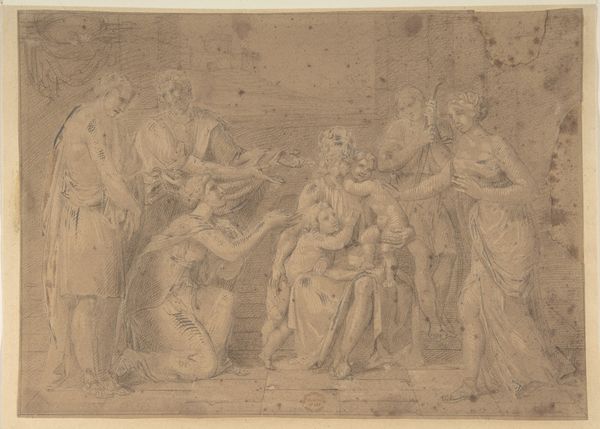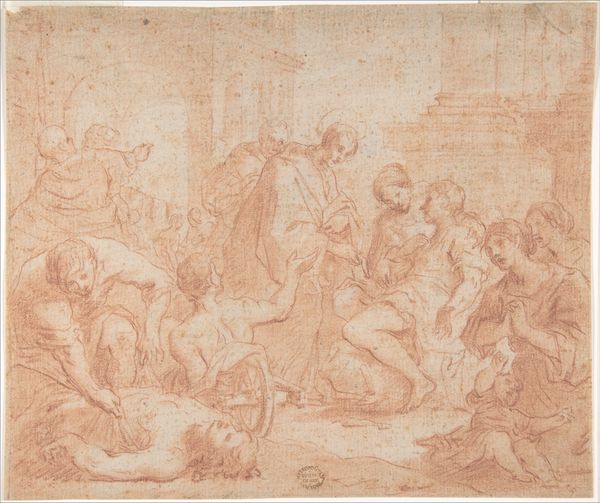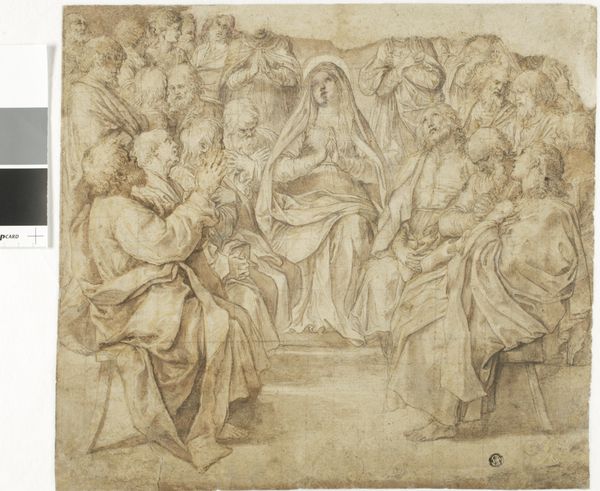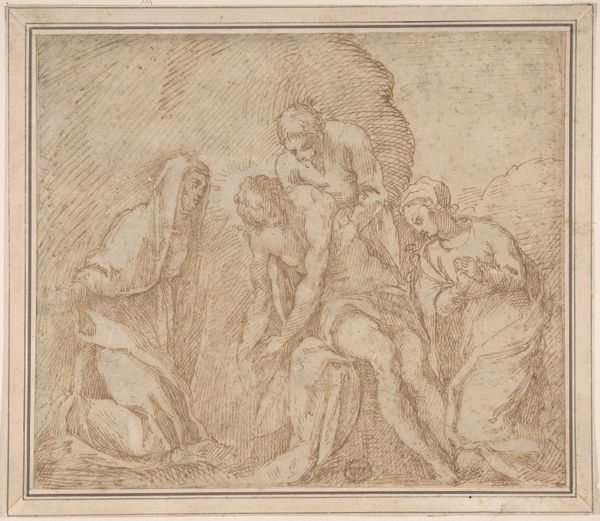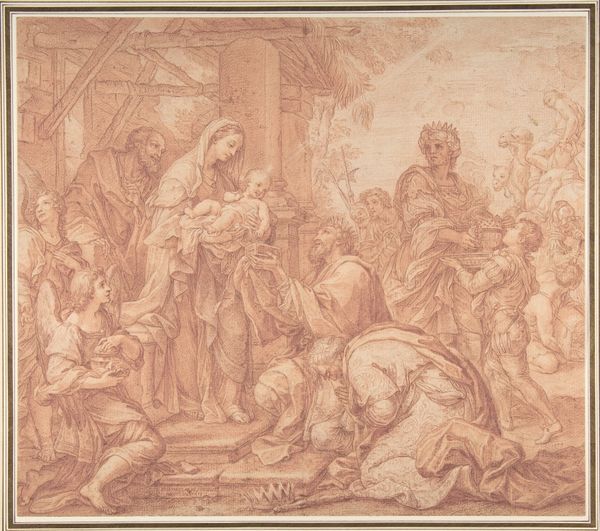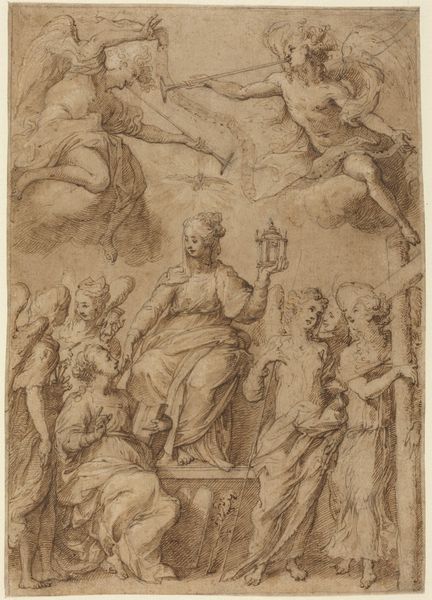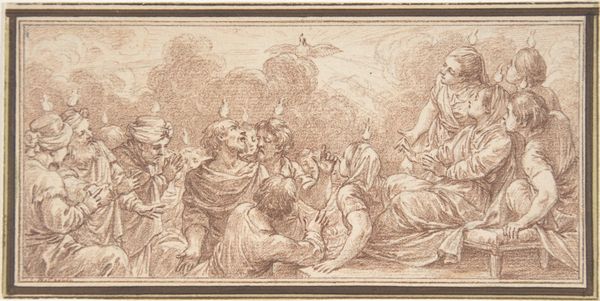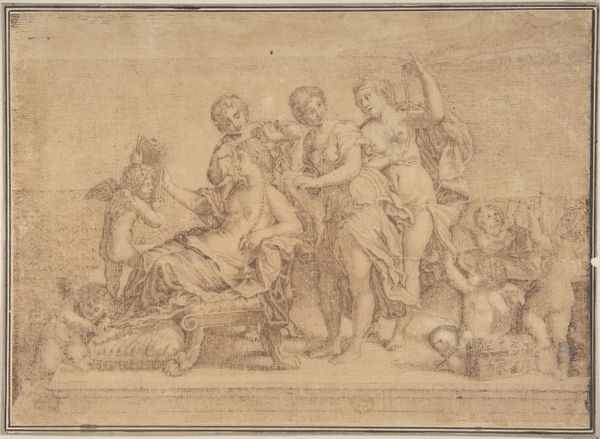
drawing, print, pencil, charcoal
#
drawing
#
baroque
# print
#
pencil sketch
#
charcoal drawing
#
pencil drawing
#
pencil
#
genre-painting
#
charcoal
#
history-painting
#
italian-renaissance
Dimensions: 8-15/16 x 12-11/16 in. (22.7 x 32.2 cm)
Copyright: Public Domain
Editor: This is Ercole Graziani the Younger's "Adoration of the Magi," created sometime between 1688 and 1765. It's a drawing, with visible use of pencil and charcoal. There's a gentle, almost dreamlike quality to the piece. I wonder, what visual traditions or symbols are at play here? Curator: The scene is indeed a rich tapestry of symbolic and visual echoes. The Adoration itself, of course, carries immense cultural weight: the three Magi represent different continents and ages, united in acknowledging the Christ Child. Do you notice anything peculiar about how the artist renders their gifts? Editor: I see that one Magus carries a covered bowl. I thought the gifts were frankincense, gold, and myrrh. Curator: Precisely. The obscured nature of the gift intrigues me. Perhaps it invites contemplation of hidden meanings or the mystery of faith itself. Then observe the light emanating from above—not just a natural light source, but a beacon suggesting divine presence. Does the classical architecture provide another layer? Editor: It does; the column seems almost like a ruin, a past order yielding to something new. How might that reading shift if we considered the context of the Italian Renaissance? Curator: The Renaissance looked back to classical antiquity for inspiration, yet this scene filters those classical forms through a distinctly Baroque lens. The drama, the dynamism of the figures, it all heightens the emotional impact, doesn't it? But what continuous cultural memories of divinity did the artwork draw upon and add to? Editor: That's a fascinating question – how the image both borrows from and shapes our understanding of this event. Curator: Exactly. This drawing, therefore, is more than just a depiction; it’s an evolving symbol resonating through time, continuously renewing its meaning with each viewing.
Comments
No comments
Be the first to comment and join the conversation on the ultimate creative platform.
